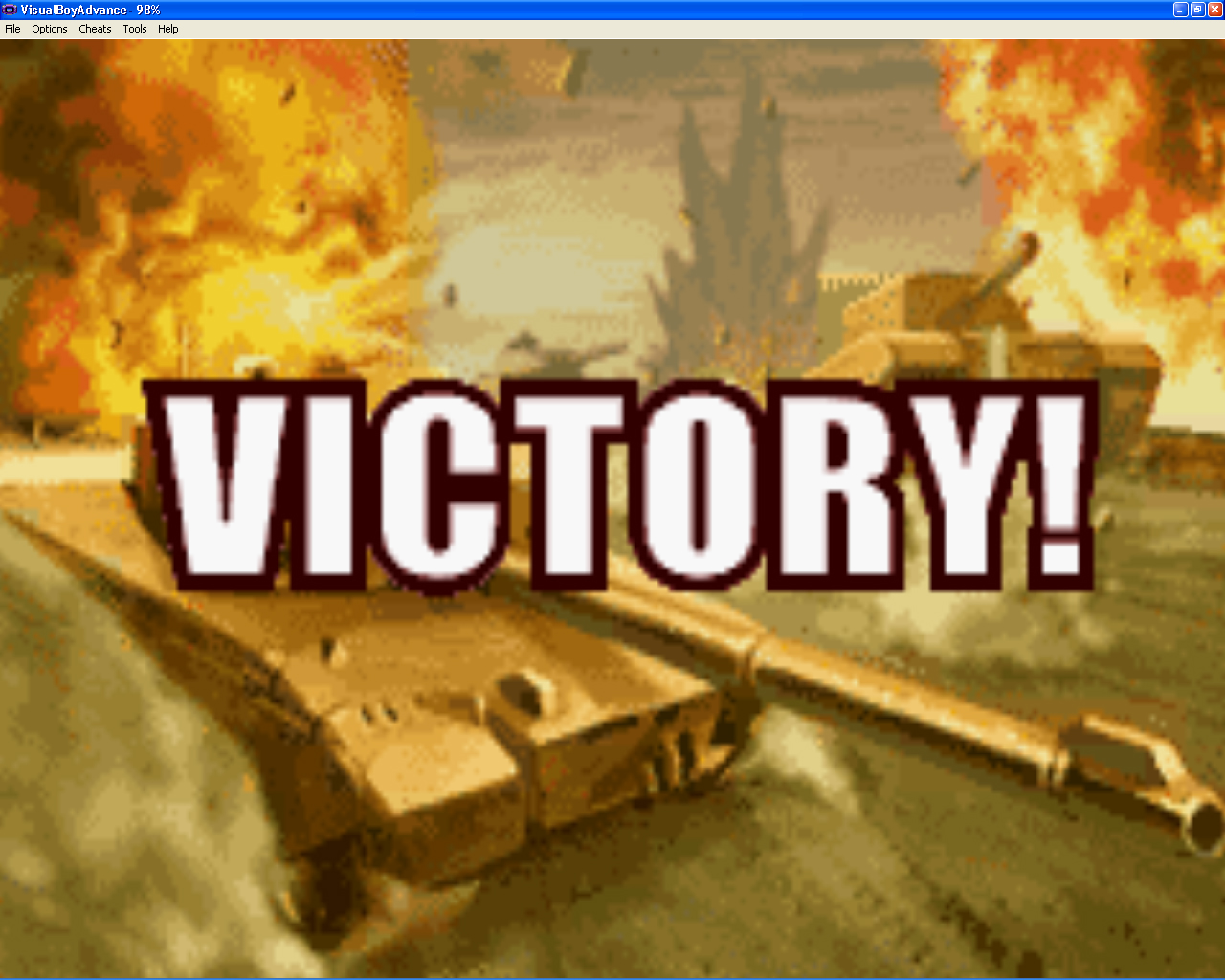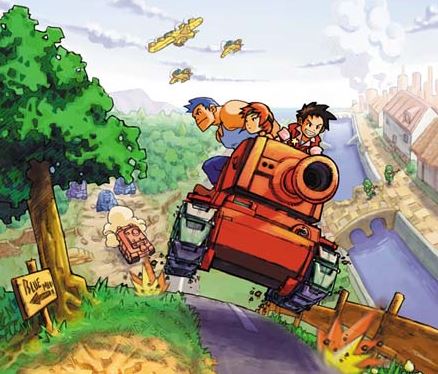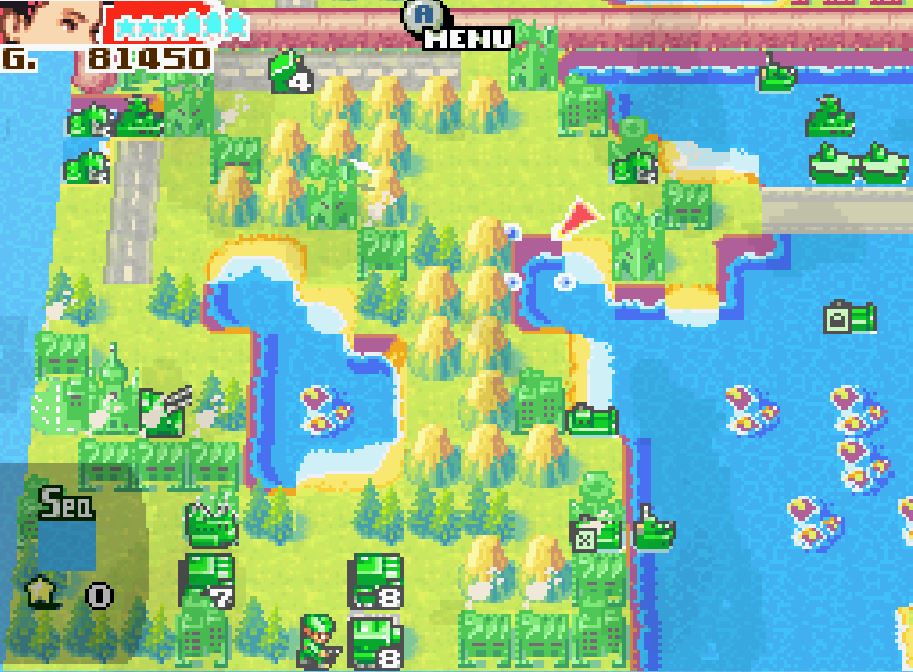Advance Wars
General informations
Advance Wars is a series of four military turn-based strategy games. Advance Wars is actually a subseries of the Nintendo Wars series, but in the West, we don't have access to the other games (except for the Battalion Wars games). The games may belong to Nintendo, but they're developped by Intelligent Systems, who also makes the very successful Fire Emblem series, and who did all of the Paper Mario games.
The 4 AW games are Advance Wars, Advance Wars 2: Black Hole Rising, Advance Wars: Dual Strike, and Advance Wars: Days of Ruins (NA)/Dark Conflict (EU). No new AW game has been released since 2008, but the community still harbors some hope.
Gameplay is turn-based, meaning you move and produce your troops (infantery, tanks, planes, ships, etc), then the enemy does the same, then it's your turn again, and so on. Since the AW games are Nintendo games, despite their military nature, they're all brightly colorful and light-hearted -- almost as if nobody died in these battles. The story and characters and setting are all quite Nintendo-ish. The gameplay too: it's a classic "easy to learn, difficult to master" kind of gameplay. A bit like chess, you can easily learn how to play but years of training are required to actually be really good at it.
Difference between the first 3 games and the fourth one
For the first 3 games each new game brought some new units and maps to the table, a few more characters, and that's really it, the gameplay never changed. Unfortunately, each new unit added broke the game further. In AW1, the most powerful ground unit was the Medium Tank (why was it called Medium then, don't ask). In AW2, the Neotank was the most powerful unit; unfortunately its dramatic firepower was balanced by strictly nothing. A Medium Tank can move 5 spaces and must spend at least two turns to destroy a light tank unit, while a Neotank can move 6 spaces and destroy a light tank unit in one turn. Even the price of the Neotank is not really daunting: 22 000c. against 16 000c. for a mere Medium Tank.
But everything took off with AW:DS and the apparition of the Megatank. This tank can only move 4 spaces, carry 3 shells, have only 50 fuel units, cost as much as a freaking Battleship (28 000c.), and it's still broken beyond repair. The Megatank can wipe out a Neotank unit in only 1 turn, and can take an absurd amount of punishment. Combined with an APC for supplies, it's downright unstoppable unless the opposing side also has a Megatank at hand. So that's what it comes down to in the end: a battle of Megatanks with no need for other units, except when you don't have the necessary funds.
It's a bit of the same for the different playable generals. Each has some kind of power that is supposed to help them during battle, but while AW:DS brought a large amount of new characters, the number of "clones" (generals having the game abilities and powers) went dramatically up.
Fortunately, the fourth game in the series, Advance Wars: Days of Ruins, rebalanced EVERYTHING from units data to terrain movement costs and Generals' powers. The tank units was completely redesigned: the light and medium tank are sensibly the same as before but the Neotank is gone and the Megatank's firepower is greatly decreased. The Megatank now carries 5 shells and only costs 16 000 to make, but due to its newly decreased firepower, having a number of light and medium tanks to support the army is now a good idea too.
In brief AW4 gave back to each unit its purpose, while also adding some new units and changing several units' behavior to better balance the whole thing. Mainly, the Battleship can now fire after moving, making its range 10 squares wide; the aircraft carrier can now produce a special kind of airplane, the carrier plane, and can repair its on-board units; the Defensive Canon appears, and is an awesome units used to defend territory and facilities, and the Flare unit can clear some of the fog of war, making it most needed in FOW conditions, and very useful when used in coordination with Recon units.
Setting and story
The first three AW games are set in the same universe, while Days of Ruins took the series in a different direction. The first 3 games are very bright and colorful, but despite their commercial success Nintendo felt that to win the heart of the Western audience, the fourth game had to be more "gritty" and "dark". Thus, Days of Ruins is far darker than its predecessors. However, against all odds, the game's story, setting (post-apocalyptic) and even characters were very well thought out and it honestly turned out quite well, unlike what one could expect.
RFF
RFF="Report from the field". A game can last from 15 minutes to several month, and most often, the longer it gets, the better and the most interesting it becomes. Thus, it's important to keep a trace of the most thrilling games you experienced. Doing so can be quite a bore. Several methods are available:
- Emulation: every turn, you take a screenshot of the entire battlefield/operation area. Very bothersome
- From time to time, you write in an innocent .txt file what happened and the war plans for the near future. Probably the most reasonable method
- Deprecated and not recommanded nowaday: you actually draw a simplified version of the battlefield on a piece of paper and you draw stuff from there. Pieces of paper are easily lost


